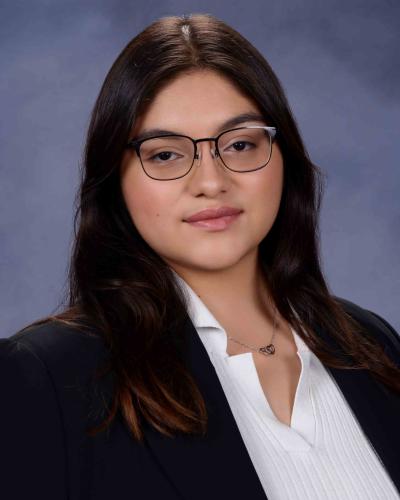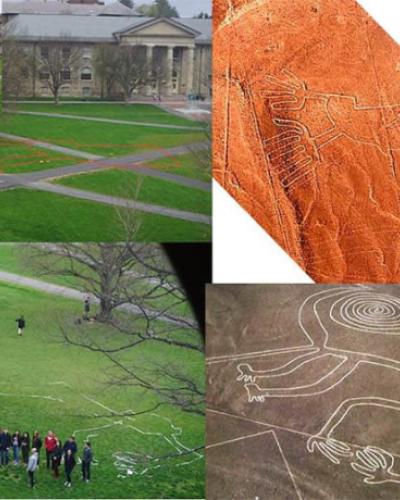Uthara Suvrathan, a visiting Hirsch Postdoctoral Fellow in the Cornell Institute of Archaeology and Materials Studies, recently led her class (ARKEO/ANTHRO 2140, Fantastic Frauds and Myths in Archaeology) in a Nazca Lines activity on the Arts Quad.
The Nazca Lines are ancient, gigantic (several are over 300m long) geoglyphs drawn on a desert in Peru. Suvrathan explains the activity below:
In class, we have been talking about the archaeological debates about their nature and construction. There are two main opposing views. First are those who argue that these designs could not have been constructed by prehistoric peoples due to their use of simple technologies, and therefore the designs were the work of alien visitors to Earth who brought sophisticated technologies with them. Moreover, since the figures are so large, they were meant to be seen from the air, and in a time before airplanes, alien spacecraft were required to truly appreciate the designs. Second, are archaeologists who argue that these designs draw upon local cultural traditions and could easily be made using simple tools and human knowledge of geography, astronomy and mathematics.
In class, we have been discussing these opposing views and as a project reconstructed two of the Nazca designs, albeit at a smaller scale than the original figures. Using simple tools (ropes, the position of the sun/ buildings, sticks/rulers, an understanding of basic geometry and scale) we laid out multicolored flagging tape on the Arts Quad lawns, anchoring them in position with small gardening flags. The students worked in two groups and recreated two of the Nazca designs: the frog and the monkey, using a grid system and measuring off an x/y axis respectively.
The purpose of this activity was to prove that these and similar ancient designs do not require the intervention of alien technologies but merely the ingenuity of human brains. Moreover, as predicted, we were able to climb to the fourth floors of McGraw and Morrill Halls and were able to see the designs in their entirety, thereby proving that one can appreciate the designs without being on spacecraft but could, as in the case of the Peruvian creators of the Nazca lines, climb up on neighbouring hill-sides to view the designs.
Uthara Suvrathan was recently named a Bard Graduate Center Fellow for the 2016-2017 academic year. Uthara Suvrathan’s research draws on both archaeological and textual material to examine the organization of polities and places on the margins of large socio-political systems and empires in South Asia. At Bard Graduate Center, Suvrathan will be completing her book manuscript Persistent Peripheries: Archaeological and historical landscapes of an early city in South India, 3rd c. BCE–18th c. CE. Congratulations, Uthara.
Bard Graduate Center, a member of the Association of Research Institutes in Art History (ARIAH), offers long- and short-term fellowships for researchers working on the cultural history of the material world, whether through art history, architecture and design history, economic and cultural history, history of technology, philosophy, anthropology, or archaeology.





